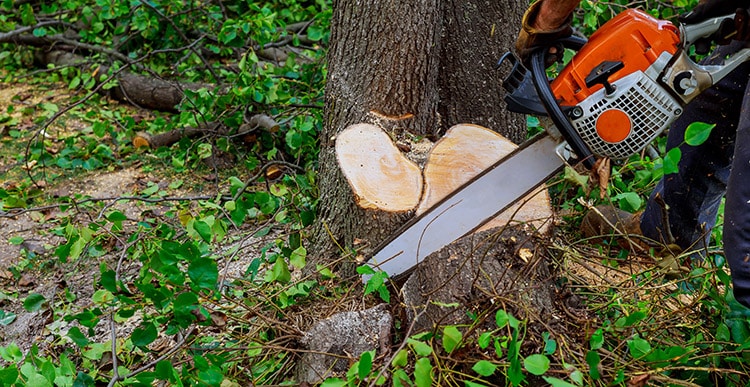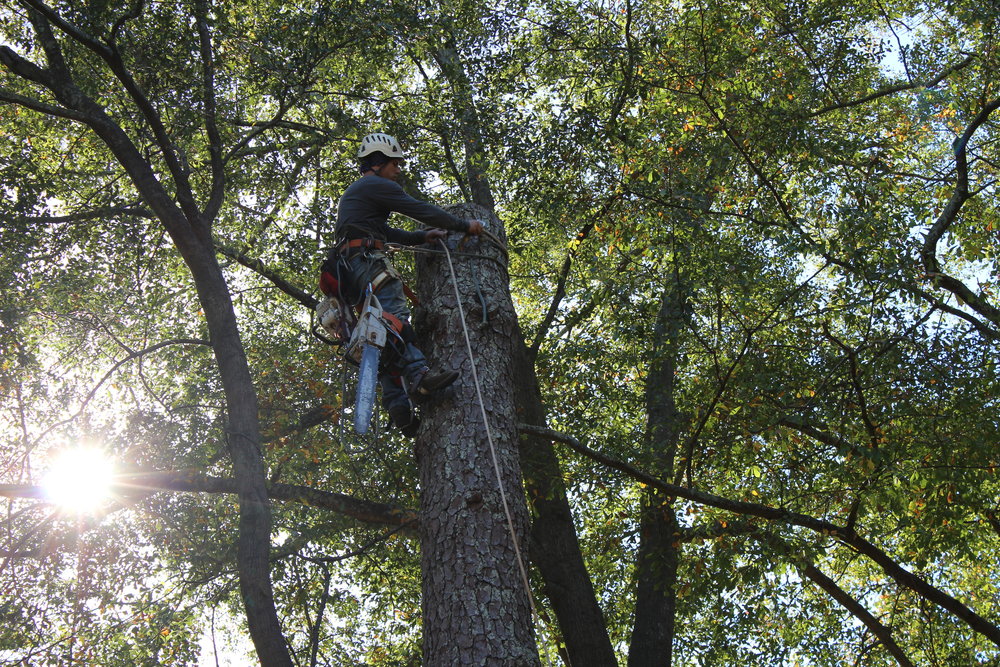Determine the most cost-effective time of year for tree removal is a question frequently asked by homeowners and property managers looking to manage their spending effectively. The cost of tree removal might vary throughout the year owing to a variety of factors such as seasonal changes, demand for services, weather conditions, and more. Understanding when tree removal expenses may be lower might help people plan and budget for this vital service.
How tree removal is beneficial in cheapest time of year
Because of lower demand and potential discounts from tree removal providers, tree removal during the cheapest time of year might offer cost-saving benefits. Furthermore, good weather conditions during specific seasons, such as winter, may assist quicker and more efficient removal methods. During off-peak times, arborists and equipment may be more readily available, allowing for more efficient scheduling and completion of tree removal tasks. Removing trees during these times can help to address dangers and prepare the environment for future seasons, as well as potentially use negotiation power for more flexible pricing or services.
Factors Influencing Tree Removal Costs
Tree Size and Complexity: Larger or more complicated trees may need more work, specialized equipment, and time to remove, resulting in greater expenditures as compared to smaller, simpler trees.
Location and Accessibility: Trees in difficult or inaccessible situations, such as near buildings or electrical lines, may necessitate additional care, specialist techniques, or equipment, raising overall removal costs.
Tree Condition and Health: Diseased, dead, or unstable trees offer more threats and must be removed with care. Addressing such trees may need additional safety precautions and expertise, which may increase removal costs.
Emergency Removals: Due to the fast reaction required by tree removal services, urgent removals due to storm damage or fallen trees may entail extra fees.
Additional Services: Services other than simple tree removal, such as stump grinding, trash removal, or limb chipping, might increase the entire cost.
Permits and Regulations: Some locations may require permits for tree removal, which may involve additional expenses. Local rules may also have an impact on the final cost.
Seasonal and Market factors: Seasonal and market factors can all have an impact on price. For example, strong demand during specific seasons may result in higher rates owing to restricted service availability.
Understanding these aspects aids in predicting and preparing for tree removal expenses. Assessing these issues in advance will help you get accurate prices and make educated judgments regarding tree removal services.
The cheapest time of year for tree removal
The cheapest time of year for tree removal is determined by a variety of factors. In general, winter is a time when tree removal services may be less expensive in some places. Due to the colder weather and fewer landscaping projects during this season, tree removal businesses may suffer lower demand, resulting in a drop in their workload. As a result, some businesses may offer more competitive prices during the winter months in order to attract customers.
Furthermore, in areas where trees fall dormant and drop their leaves in the winter, the removal process might be simplified. The absence of foliage allows arborists to examine the tree’s structure and undertake removals more easily, potentially lowering labor time and associated expenses.
However, it’s crucial to know that the cheapest time for tree removal might vary greatly depending on region. Pricing variances are influenced by local market dynamics, weather circumstances, and specific firm policies. As a result, while winter may offer overall cost advantages for tree removal, it’s best to contact local arborists or tree removal firms to establish the most cost-effective period for tree removal in your individual location.
Efficient Removal Processes
Efficient tree removal techniques at the most affordable time provide various benefits. Off-peak seasons, such as winter, can provide ideal circumstances for simplified and expedited removal operations. With less demand, tree removal businesses may have more availability, allowing for faster project scheduling and completion.
The lack of foliage at these times streamlines the removal procedure, making it easier for arborists to examine tree structures and undertake removals quickly. Furthermore, ideal weather conditions in some places during off-peak seasons contribute to smoother operations, increasing total efficiency.
Efficient removal techniques not only save time but also help to save costs. Reduced labor time and improved procedures guarantee that tree removal happens quickly and smoothly, allowing homeowners to solve their tree-related concerns efficiently and affordably.
Cost Savings and Budgeting
Optimizing the time of tree removal not only assures efficient procedures, but also assists in successfully controlling expenditures and budgets. Choosing the least expensive period for tree removal helps homeowners to plan ahead, making it simpler to budget for this vital operation.
Individuals can greatly minimize their expenditures associated with tree removal initiatives by taking advantage of cost-effective seasons. Tree removal at off-peak seasons, such as winter, when demand is lower, might result in cost savings. Due to decreased demand, tree removal businesses frequently offer competitive pricing or discounts, allowing homeowners to benefit from possible cost savings.
When homeowners arrange to remove trees during the least expensive season, budgeting becomes easier. Anticipating the costs of tree removal during these times allows for better planning.
FAQS
When is the best time of year to have a tree removed?
The cheapest season for tree removal varies, but in general, winter months have lesser demand, which may result in more reasonable pricing from tree removal services.
Are there any other elements influencing tree removal expenses besides the season?
Yes, tree size, intricacy, location, health, extra services required, and emergency removals may all affect the final cost.
Do tree removal firms provide discounts during the off-season?
During seasons of low demand, such as winter, certain businesses may provide discounts or more flexible pricing, however this varies depending on area and corporate policy.
Are tree removal licenses necessary, and how do they affect costs?
Some localities require permits for tree removal, which may increase the final cost.
How can I find the most cost-effective time for tree removal in my area?
Consultation with local arborists or tree removal firms is recommended. They can give location-specific information into the most cost-effective timing for tree removal.
Conclusion
While winter is frequently seen as a more cost-effective period for tree removal owing to lower demand, pricing changes are caused by a variety of variables. Costs are influenced by tree size, condition, location, and extra services required. It is best to consult with local arborists for specialized advice on the most cost-effective timing for tree removal in a given region.











